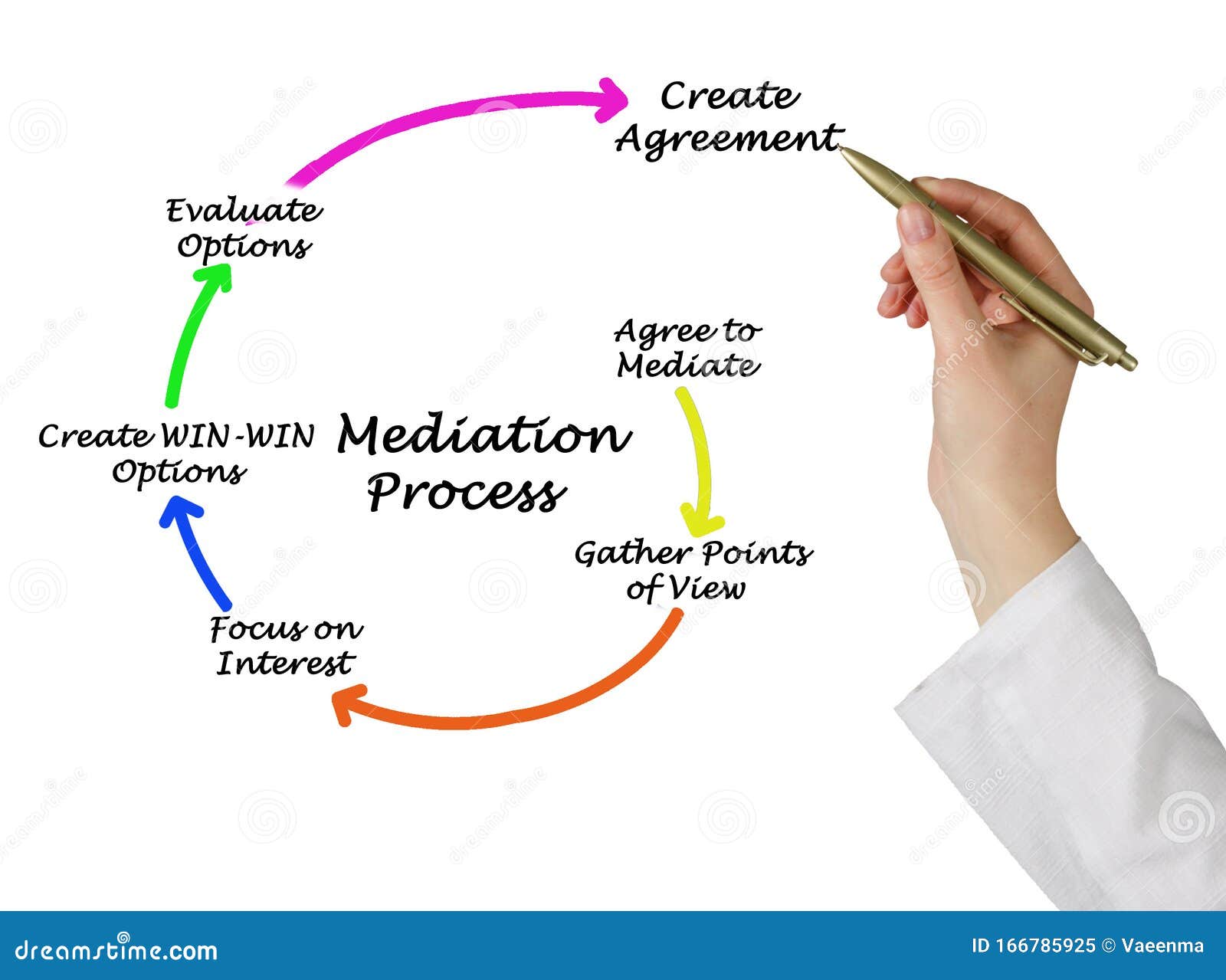is a voluntary and confidential process used to resolve disputes between two or more parties with the help of a neutral third party called a mediator. The mediator’s role is to facilitate communication, encourage understanding, and assist the parties in reaching a mutually acceptable agreement.
The mediation process typically involves the following steps
Table of Contents
Initial contact
The parties involved in the dispute contact a mediator or a mediation service provider to initiate the mediation process. The mediator explains the process, discusses the parties’ expectations, and addresses any concerns or questions they may have.
Mediation agreement
Once the parties agree to proceed with mediation, they sign a mediation agreement that outlines the terms and conditions of the process. This agreement usually covers confidentiality, the mediator’s role, the parties’ commitment to participate in good faith, and the fees involved.
Opening statements
At the beginning of the mediation session, the mediator provides an introduction and sets the ground rules. Each party is then given an opportunity to make an opening statement, expressing their perspective on the dispute and their desired outcomes.
Information gathering
The mediator facilitates a discussion where each party can present their side of the story, share their concerns, and provide relevant information. The mediator may ask questions to clarify issues and encourage the parties to express their underlying interests and needs.
Identifying issues
The mediator helps the parties identify the key issues that need to be addressed and ensures that all parties have a clear understanding of the underlying interests and concerns. This step helps to focus the discussion and move towards finding a resolution.
Generating options
The mediator assists the parties in brainstorming and generating potential solutions to the identified issues. The emphasis is on creativity and exploring various alternatives that could meet the interests of all parties involved. The mediator encourages open communication and helps the parties evaluate the pros and cons of each option.
Negotiation and agreement
The parties engage in negotiation, facilitated by the mediator, to reach a mutually acceptable agreement. The mediator helps the parties explore trade-offs, find common ground, and overcome any impasses. The agreement may be written or verbal, depending on the preferences of the parties involved.
Closure
Once an agreement is reached, the mediator summarizes the key points and ensures that all parties understand and accept the terms. If a written agreement is required, the mediator may assist in drafting it. The parties then sign the agreement, indicating their commitment to abide by its terms.
Follow-up
After the mediation process, the mediator may follow up with the parties to ensure that the agreement is being implemented and to address any concerns that may arise. The mediator may also provide additional resources or referrals if needed.
